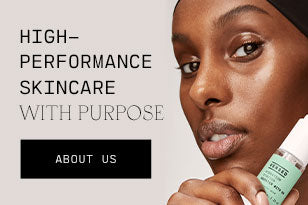
These Ingredients Will Help Your Retinol Work Even Better
Dermaplaning before makeup ensures a more flawless application. Antioxidants amplify sunscreen’s protective abilities. AHAs dissolve dead skin cells so that vitamin C can penetrate the skin—and brighten discoloration—more efficiently.
While effective solo, there are many skincare ingredients and tools that work even better together. “You get the best results when using multiple ingredients that have different mechanisms,” says New Jersey-based board-certified dermatologist Dr. Karan Lal.
Retinol—the holy grail for aging skin, dullness, acne, and uneven texture—is no exception. But because of its finicky nature (retinol can sometimes cause skin sensitivity, dryness, and irritation), many complexions may be hesitant to mix it with other ingredients. Read below as Dr. Lal explains which ingredients can help your retinol work even better—and which to avoid.
THE BEST INGREDIENTS TO PAIR WITH RETINOL
NIACINAMIDE
“Niacinamide is a great ingredient that fights free radicals, reduces hyperpigmentation, and also moisturizes the skin,” explains Dr. Lal. But because it also boosts keratin production (an essential protein that keeps skin strong and healthy), it's also helpful at combatting those aforementioned retinol side effects. “Niacinamide paired with retinol can reduce irritation, which can occur in first-time users, and help hydrate skin at the same time.” If you’re particularly concerned about dullness and/or dark spots, apply the Brightening Serum or Dark Spot Gel (both of which use niacinamide, along with other brightening ingredients) before following up with retinol, which boosts cellular turnover for a more even-toned complexion.
For dark circles and tired undereyes, apply our Advanced Retinoid Eye Balm in the evenings, then follow up with our niacinamide-filled Brightening Eye Gel in the AM.
HUMECTANTS
Humectants—such as hyaluronic acid, glycerin, and sodium hyaluronate—draw in moisture, hydrating and softening the skin. “These are powerhouse skin hydrators that keep your skin dewy,” explains Dr. Lal. Because of their soothing qualities, they can also “make retinol more tolerable and reduce the risk of irritation.”
We formulated the Gentle Retinol Serum with humectants (sodium hyaluronate and glycerin, specifically) along with other anti-inflammatories and antioxidants like chlorophyll to prevent skin irritation and dryness. For an extra boost of hydration, you can also add a few drops of our Hyaluronic Acid Serum Booster to it before applying.
For sensitive skin types, some experts even recommend the “sandwich method” when using retinol. First, apply a light layer of a humectant-filled moisturizer like Dew Point. Next, smooth on your retinol. Finally, apply a second, thicker layer of the same moisturizer to seal everything in.
AMINO ACIDS
Skin-strengthening amino acids “help repair and replenish the skin and stimulate collagen production,” says Dr. Lal. And because collagen keeps skin bouncy, firm, and plump, it’s no wonder amino acids are especially beneficial when combined with an ingredient for aging skin like retinol. That’s why the ingredient list for our Retinol Body Lotion contains capric triglyceride, a mix of amino acids and glycerin.
Before applying retinol to the face, cleanse skin with the Antioxidant Cleanser. Its superfruit complex—along with barrier-strengthening pro-vitamin B5—gently hydrate and prep skin for retinol application.
SUNSCREEN
Retinol can make skin more sensitive to the sun, so ample daily protection is key. We recommend saving retinol for your PM routine but if you do apply during the daytime, always follow up with a broad-spectrum sunscreen, such as Guards Up, and reapply every two hours. This will ensure all of retinol’s hard work at firming, brightening, and repairing the skin is preserved.
INGREDIENTS TO AVOID LAYERING WITH RETINOL
Remember: Although retinol is well-loved, it can irritate some skin types, particularly sensitive ones. To avoid any potential side effects, Dr. Lal says to avoid mixing retinol with these.
EXFOLIATING ACIDS (AHAS AND BHAS)
“Many active acids not only degrade retinol but also increase the irritation that can come with it; it is best to avoid also using active alpha or beta hydroxy acids when applying your retinol.” This includes glycolic, lactic, kojic, citric, mandelic, and salicylic acid.
BENZOYL PEROXIDE
Although retinol can help heal breakouts, be careful when using other acne medications. “Benzoyl peroxide can degrade retinol, so do not use this immediately before or after applying retinol.” Instead, apply Just Breathe. Formulated with niacinamide and zinc, it’s safe to use alongside retinol.
VITAMIN C*
“Vitamin C products often have a lower pH, which may degrade retinol-containing products. However, some studies have shown that retinol maintains its efficacy with vitamin C,” explains Dr. Lal. “Personally, I believe vitamin C and retinol are safe when used together but not for the retinol-naive, because of [potential] irritation.” If you’re sensitive or new to retinol, it’s best to avoid this combination unless the two ingredients are already formulated together.
Note from the derm: “Just because you can’t use some of these ingredients at the same time doesn’t mean they can’t be used on the same day!” If you want to use any of the ingredients listed above, just apply them at different times. “Acids, vitamin C, and benzoyl peroxide can safely be used in the mornings when retinol is used at bedtime,” he adds.
Next, read how often to apply your retinol skincare products.






